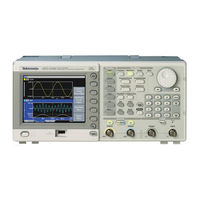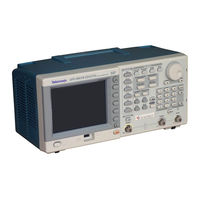Tektronix AFG3021B Manuals
Manuals and User Guides for Tektronix AFG3021B. We have 5 Tektronix AFG3021B manuals available for free PDF download: Programmer's Manual, User Manual, Quick Start User Manual, Technical Reference, Manual
Tektronix AFG3021B Programmer's Manual (232 pages)
Arbitrary/Function Generators
Brand: Tektronix
|
Category: Portable Generator
|
Size: 1 MB
Table of Contents
Advertisement
Tektronix AFG3021B Quick Start User Manual (108 pages)
Arbitrary/Function Generators
Brand: Tektronix
|
Category: Portable Generator
|
Size: 5 MB
Table of Contents
Tektronix AFG3021B User Manual (113 pages)
arbitrary function generator afg3000 series; afg3000c series;
Table of Contents
Advertisement
Tektronix AFG3021B Technical Reference (77 pages)
Arbitrary Function Generators
Brand: Tektronix
|
Category: Portable Generator
|
Size: 0 MB
Table of Contents
Tektronix AFG3021B Manual (19 pages)
Brand: Tektronix
|
Category: Portable Generator
|
Size: 1 MB




